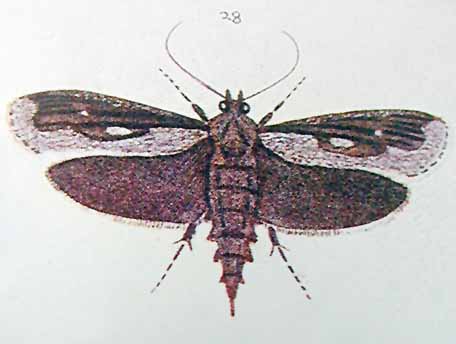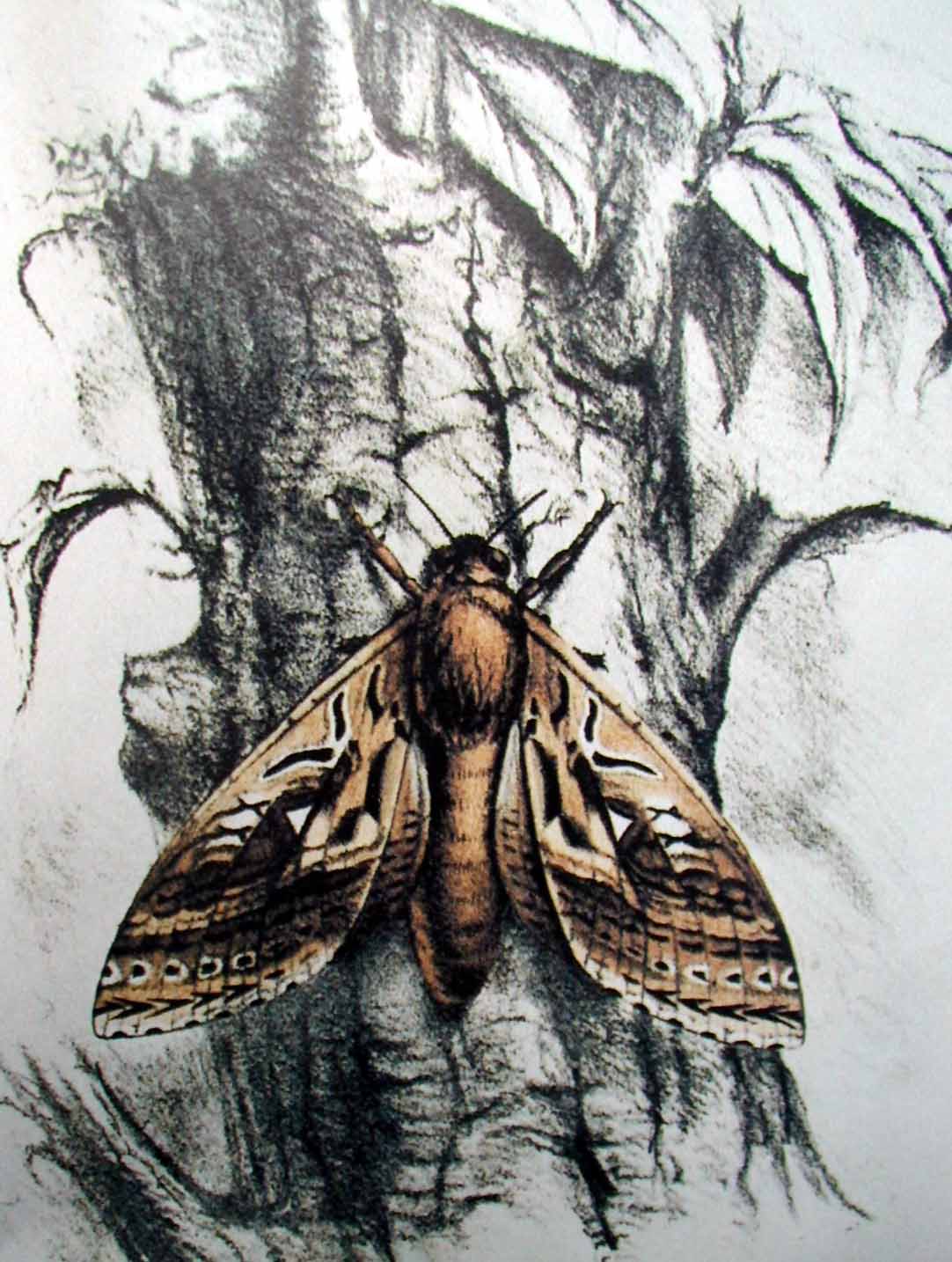Forgotten Fauna
Chapter 3
Ancient Survivors
Most of the threatened or endangered invertebrates in New Zealand are
large, conspicuous, or flightless, and hence fall easy prey to introduced
mammals. Others are restricted to habitats which have been largely modified
or destroyed. There are some, however, that would be facing a n uncertain
future, even without the arrival of humans, a changing landscape and numerous
predators.
Myer's cicada is small, camouflaged, and able to fly, but it has not
adapted to the changes which have shaped New Zealand's present landscape,
and is now isolated in a few rocky screes near Turakirae Head, Wellington.
Its
(text not yet typed up)

Titanomis sisyrota, from G.V.Hudson, 1928, "Butterflies and Moths
of N.Z."
Buller's moth
Aoraia mairi

From W.L.Buller, 1873, by courtesy of the Royal Society of N.Z.
New Zealand's largest moth may well be rarer than the black robin or
the kakapo. Buller's moth, a relative of the agricultural pest species
the porina, is known only from a single specimen caught in the Ruahine
Ranges by Sir Walter Buller (the famous Victorian ornithologist) and his
brother-in-law, Captain Gilbert Mair, while they were searching for huia
during summer of 1867.
The moth was reported to have a wingspan of almost 6 inches (150 millimetres),
being as large as the huge bright green puriri or ghost moth which is occasionally
attracted to house and street lamps on moist nights mainly during spring.
The moth was described by Buller and illustrated in the
The second part of the mystery lies with two caterpillars collected
in 1975 from silver beech forest in the Orongorongo Valley, near Wellington.
These caterpillars, which tunnel in the soil and emerge at night to feed
on the surrounding vegetation, are new to science. Are they the caterpillars
of the mysterious Buller's moth, or a new species of large moth?
Attempts were made to rear the caterpillars on both natural and artificial
diets, but without success, and trapping for adult moths has so far failed.
Until we are successful, the only record we have of this giant moth is
a painting of a single moth caught more than 120years ago!